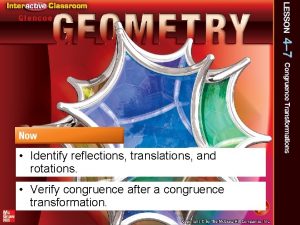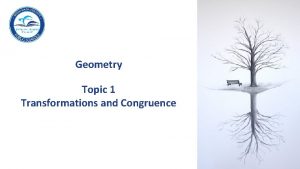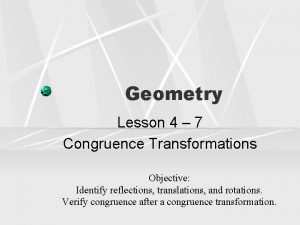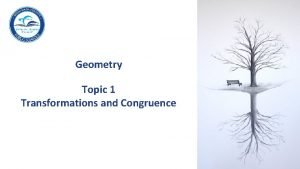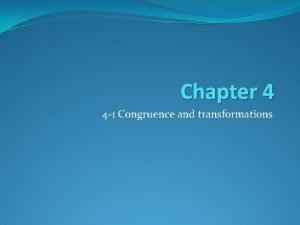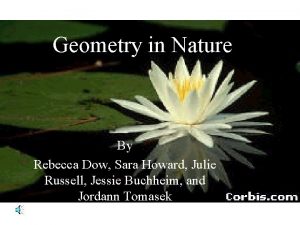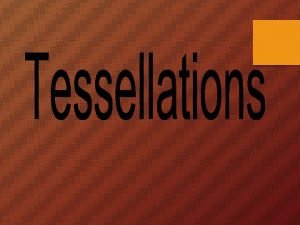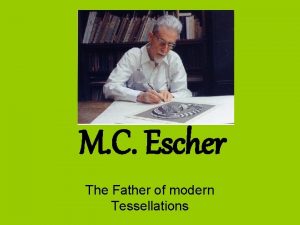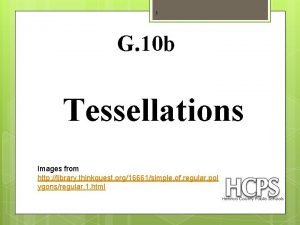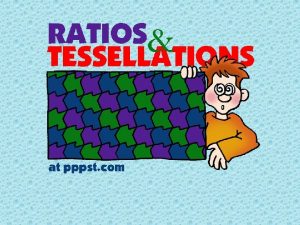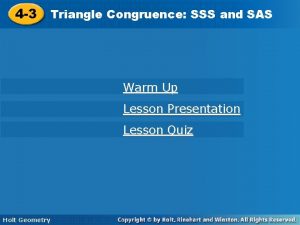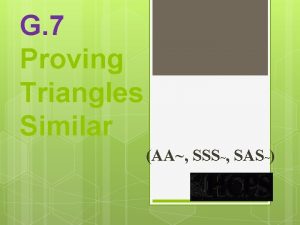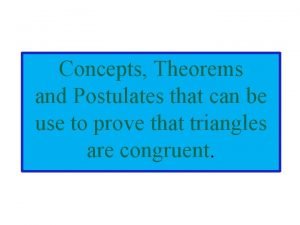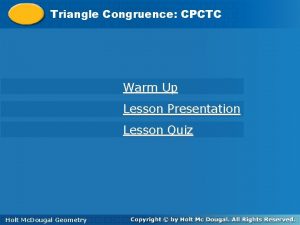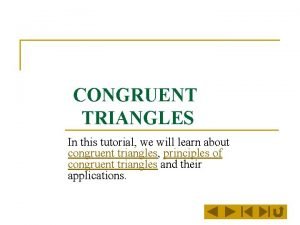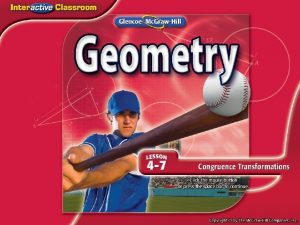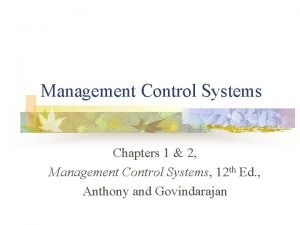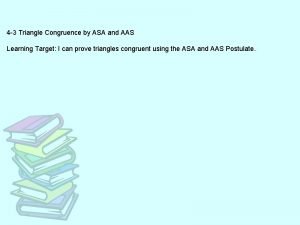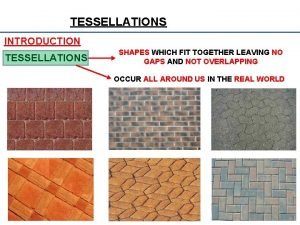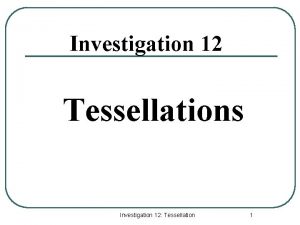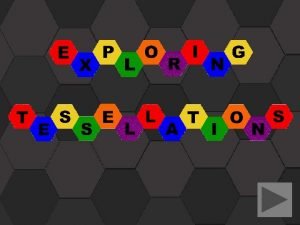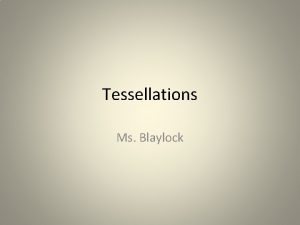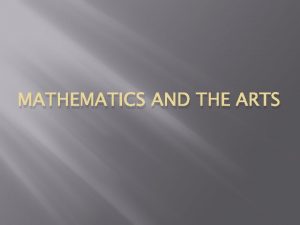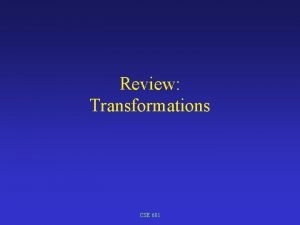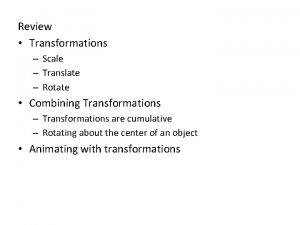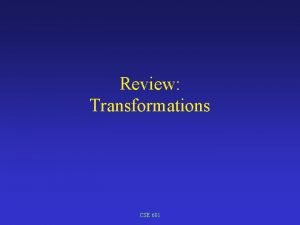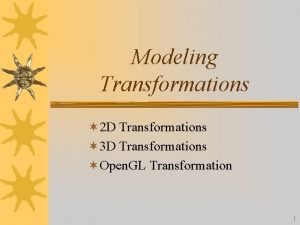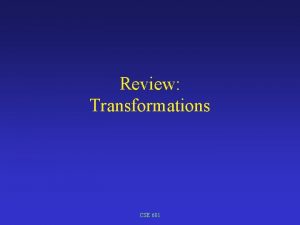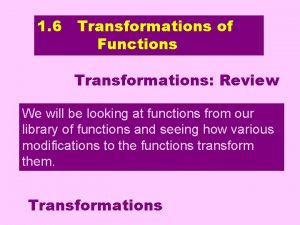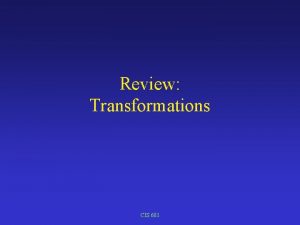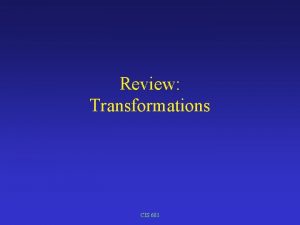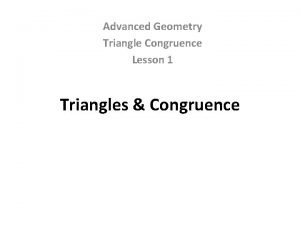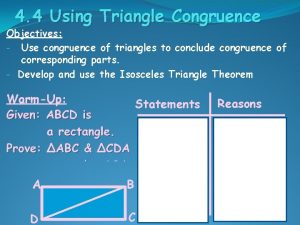APPLICATIONS OF CONGRUENCE TRANSFORMATIONS IN TESSELLATIONS WITH TECHNOLOGYENHANCED

















- Slides: 17

APPLICATIONS OF CONGRUENCE TRANSFORMATIONS IN TESSELLATIONS WITH TECHNOLOGY-ENHANCED RESOURCES Ana Donevska-Todorova Humboldt-Universität zu Berlin

Overview 1. 2. 3. 4. 5. 6. Relevance of theme and aim of the study Theoretical background and research stand Research questions and research method Design of a micro-world in a DGS for applications of congruence mappings in tessellations Results and discussion Conclusions and suggestions for further research

1. Relevance of the Theme in Mathematics Education Preschool: � Elementary school: � laying and puzzle games without a particular attention to learning of congruence mappings; absence of a precise mathematical language and terminology mathematical patterning refers to chances and challenges of interdisciplinary and creative teaching and learning approaches in mathematics and arts in elementary schools (e. g. , Hartfeldt & Henning, 2002). Secondary school: � Understanding and applying theorems for congruence of geometric figures, theorems for the sum of inner angles of polygons (referring Curricula)

2. Theoretical background Mathematical content A tessellation of a plane - covering the plane without gaps and overlaps, is possible with any types of triangles and quadrilaterals. � This includes the regular 3 - and 4 sided polygons. A tessellation of a plane is also possible with regular hexagons, but not with regular pentagons. � � There exist special pentagons, which are an exception (Figure) Tessellation by regular n-gons, for n>6 is not possible.

2. Theoretical background and research stand • Previous Research • • Future perspectives • • The 17 th ICMI Study, Mathematical Education and Technology-Rethinking the Terrain: • design of teaching and learning technology-based environments, curricula evolution and current research trends in developing theories. “There is a wide technological space that is nearly terra incognita. ” (Artigue, 2010, p. 469) • “From microworlds and open software to tutorials and on-line resources” (Artigue, 2010, p. 468) • “ The role of emerging technologies, e. g. tablets, smartphones, virtual learning environments, augmented reality environments and haptic technologies ” (ICME-13, TSG 43 Call) Current Research State • Cognitive and epistemological perspectives of technological utilization in mathematics education remain insufficiently discussed (ICME-13, TSG 43 Call). • This study investigates the mathematical cognition in terms of kinds of mathematical thinking which characterize Geometry

2. Theoretical background and research stand Three modes of thinking and description of mathematical concepts in Linear algebra (Sierpinska, 2010; Hillel, 2010) A nested model for connecting the modes in Geometry (Donevska. Todorova, 2018, p. 270; Donevska-Todorova & Turgut, 2017) Konyalioglu et al. , 2011, p. 4042 Donevska-Todorova, 2018, p. 270

2. Theoretical background and research stand Recursive Exploration Space (Hegedus, Dalton & Moreno-Armella, 2007) � Action-reaction loops by dragging modalities (Arzarello et al. 2002) � connections between the geometric and the algebraic modes by the dragging or the zoom tools As the frequency of these action-reaction loops is increasing, the time-intervals between the loops are decreasing. ”The cognitive distance between the students and the problem diminishes” (Hegedus, Dalton & Moreno-Armella, 2007, p. 1422). RES has continuous dynamic (as much as it is allowed by the software), in comparison to static inert, static kinesthetic/aesthetic or static computational features (Moreno-Armella, Hegedus & Kaput, 2008). The RES is more than an infrastructure for embodied actions, more than a technical mediator. It is rather a collaborator in co-actions which allow selfcontrol of the user. Frozen/ fluid medium (Donevska-Todorova, 2018)

3. Research questions and research method How could a DGS-based teaching environment facilitate the learning of applications of congruence mappings in tessellations with quadrilaterals and triangles by pre-service elementary school teachers? Participants interact with the microenvironment containing a DGS file involving also paper-pencil activities.

4. Design of a micro-world in a DGS for applications of congruence mappings in tessellations Figure 1. Tessellations with special types of quadrilaterals

4. Design of a micro-world in a DGS for applications of congruence mappings in tessellations Figure 2. Tessellations with special types of quadrilaterals

4. Design of a micro-world in a DGS for applications of congruence mappings in tessellations Are tessellations with concave quadrilaterals possible? Figure 3. Tessellations with concave quadrilaterals

4. Design of a micro-world in a DGS for applications of congruence mappings in tessellations Figure 4. Tessellations with arbitrary quadrilaterals

4. Design of a micro-world in a DGS for applications of congruence mappings in tessellations Figure 5. Tessellations with triangles

4. Design of a micro-world in a DGS for applications of congruence mappings in tessellations Figure 6. An example of a tessellations with a particular pentagon

5. Results and discussion

5. Results and discussion Related to the research question: Synchronized changes between different modes of description and thinking, both geometric and algebraic (of point reflections and translations) in a single window available through a check box Systemized explorations of all types of triangles and quadrilaterals using the drag mode of points Possibility for individualization of the learning processes through tasks with different levels of difficulty

Thank you very much for your attention! Contact Ana Donevska-Todorova Humboldt-Universität zu Berlin todorova@math. hu-berlin. de
 How to verify a congruence transformation
How to verify a congruence transformation Geometry topic 1 transformations and congruence
Geometry topic 1 transformations and congruence Types of congruence transformation
Types of congruence transformation Transformations and congruence
Transformations and congruence Congruence and transformations
Congruence and transformations Polygons in nature
Polygons in nature Tessellation regular
Tessellation regular Mc escher nationality
Mc escher nationality Escher ghosts
Escher ghosts Types of tessellations
Types of tessellations 4-3 proving triangles congruent sss sas
4-3 proving triangles congruent sss sas Similar image
Similar image Vertical angles
Vertical angles Cpctc triangle
Cpctc triangle Sss sas aas rhs
Sss sas aas rhs An operation that maps an original figure onto a new figure
An operation that maps an original figure onto a new figure Management control systems 12th edition
Management control systems 12th edition 4-3 triangle congruence by asa and aas answer key
4-3 triangle congruence by asa and aas answer key
